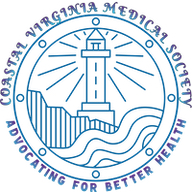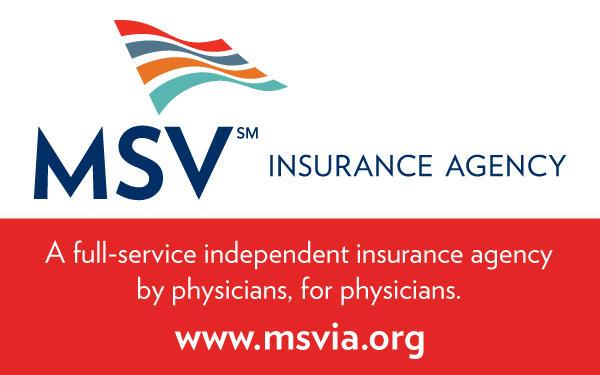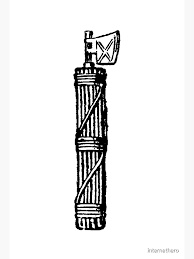And Surgeons
CVMS Bulletin
Making a Difference
in HealthCare for Eastern Virginia
December 2023
Volume 1, Issue 12

In This Issue...
- Current Status of CVMS
- Price Transparency Bill Passes
- Regulation of AI in Medicine
- Another Healthcare Giant Emerging
- Mental Health
- Physician Burdens
- Access to Care
- Biomarkers in Long Covid
- Interactive CT Case Studies
- Gender Disparities in Cardiogenic Shock
- Finding Joy in Medical Practice
- Free CMEs
- Event Board
- Newsletter Signup
Current Status of
Our New Society

The Board met again on December 7, 2023. The following is a summary of what was discussed. A full copy of the minutes is available on the website.
1. We discussed the establishment of an Affiliate Membership consisting of non-MD, and non-faculty members or organizations, who wish to maintain a partnership with CVMS. This will require a yearly membership fee depending on the size of the organization and the estimated value that these potential members can bring to CVMS. Also, we do not wish to provide exclusivity to any of these entities. For example, if one law firm joins, we will not exclude others from joining. In addition, these entities will be non-voting.
2. We have decided to establish a 501(c)3 charitable foundation as a related associate entity to be used as a tax deductible and tax exempt fund to support CVMS and also provide scholarships for selected EVMS students.
3. We will expand communication with our membership by providing useful medical news and updates with brief emails and/or short surveys once a week.
4. We will continue to focus on mental health in the community and among providers confidentially with videos and webinars.
5. Our membership is growing. Many have seen our article published in the Doctor to Doctor magazine and some have joined as a result of that. We will continue to advertise and publish articles in magazines and newsletters to make sure our message goes out to as many providers as possible and to the public so they can become educated about our healthcare system.
6. Our advocacy program will be in full force this coming year. We intend to make multiple proposals to the Virginia legislature to improve our healthcare and work toward reducing inefficiencies in our system. These will include mental health proposals, removing the prior authorization mandates, and removal of COPN laws.
We are serious about making changes as soon as possible. Our voices have been suppressed for way too long.

The Roman Fasces was a symbol of strength and power occurring as a result of many binding together. It was made of multiple elm or birchwood rods about 5 feet long tied together and sometimes including an axe. It was carried by attendants to soldiers or powerful figures in ancient Rome. For us, it symbolizes that we are stronger and more powerful if we bind together in supporting our goals.
Price Transparency Bill Passes
"The Lower Costs, More Transparency Act, which advances policies to force pharmacy benefit managers and hospitals to meet price transparency standards, passed on the House floor Monday by a vote of 320 to 71." However, fines for noncompliance were squashed due to lack of support from MSV and AMA, despite the support received from AAPS.
Regulation of AI is Ramping Up around the World
Artificial Intelligence (AI) is rapidly evolving. There are many concerns about its future and how it will affect ours and future generations. It can become a wonderful resource to make our lives better, but also has the potential to make things much worse.
A recent article published in the New England Journal of Medicine suggests that we take heed to our history of research related to new technology, some of which was not always ethical. This led to the passage of the National Research Act 50 years ago which regulated how human subjects were to be treated in medical research. The alarm has been raised again with AI. The lawmakers in the US and the European Union will likely be passing new legislation soon to regulate the research and use of AI in medicine.
This new legislation will need to answer the questions of (1) who should be making the rules, the government vs. scientists, (2) how strongly should we regulate (restrict) data collection and ownership, and (3) anticipating and planning how these regulations will be revised in the future of this rapidly moving science.
Read more here...
Laura Stark, PhD, "Medicine's Lessons for AI Regulation", NEJM, Dec. 9, 2023
Another Healthcare Giant in the Making
The potential merger of Cigna and Humana first reported by the Wall Street Journal would create yet another huge healthcare system about the size of CVS and could control a third of the market as another Pharmacy Benefit Manager (PBM) along with CVS Caremark, and Optum Rx. This would likely end up increasing costs to patients and taxpayers and result in more acquisitions of doctors' offices. It would further increase monopolization of healthcare, and stifle competition from smaller organizations. What's good for big business generally is not so good for patients, doctors and the healthcare system overall. The bigger the system, the greater the bureaucracy, the more healthcare dollars are siphoned away from patients to feed the administration, the longer the wait to access care, the less personalization of patient care, the greater the fragmentation of care, and the more loss of continuity of care. People get lost in the system and doctors become nothing more than worker bees to feed the hive, a dime a dozen. Do you think this will incentivize students to spend 11-12 years of additional training and student loans of up to $400,000 to become unidentified cogs in a system which no longer respects their abilities?
This potential merger is likely to face some anti-trust pushback. The DOJ has already blocked prior potential mergers of Aetna with Humana and Anthem with Cigna. Will see what happens with this one.
Mental Health

Mental Health will be a major focus of our efforts in 2024. These issues involve the following concerns:
- Civil commitment laws need to be liberalized to make it easier to commit violent, psychotic patients within the confines of civil rights. Civil rights are important, but so is public safety.
- We need more psychiatric hospital beds. Many of the homeless who are mentally ill should be hospitalized so they can be taken care of humanely, so they do not suffer, and so the public doesn't suffer either.
- Insurance coverage for psychiatric care is deplorable. Most insurance companies only pay for 3 days of inpatient care. Insurance coverage for 45 minute psychiatric outpatient visits is woefully inadequate to sustain a psychiatric practice.
- Malpractice liability: Psychiatrists are held liable if any of their patients kill themselves or other people. These actions are not predictable with any degree of certainty, and malpractice liability needs to be removed in these cases.
- Burnout and depression among physicians remains a major problem in our current healthcare systems stemming from lack of autonomy, barriers to patient care, inability to provide quality care due to time and financial constraints, inadequate compensation, EMR entry overload, too many mundane tasks that take up time and don't improve patient care, prior authorizations, peer to peer conversations for insurance coverage, lack of any control over their lives either professionally or otherwise.
What are the Main Burdens that Physicians Face in the Current Healthcare System?
Physicians in the current healthcare system face various challenges and burdens that can impact their ability to provide quality patient care. Some of the main burdens include:
- Administrative Burden: Physicians often spend a significant amount of time on administrative tasks, such as billing, coding, and dealing with insurance paperwork. This administrative burden can detract from the time they have available for patient care.
- Electronic Health Records (EHRs): While EHRs have the potential to improve patient care and information accessibility, the implementation and use of these systems have added to the administrative burden. Physicians may spend a substantial amount of time inputting data, navigating complex interfaces, and dealing with interoperability issues.
- Regulatory Compliance: Physicians must comply with a myriad of regulations, guidelines, and quality reporting requirements imposed by government agencies and insurance providers. Keeping up with these requirements can be time-consuming and may divert attention away from patient care.
- Workload and Burnout: Physicians often face heavy workloads and demanding schedules. The pressure to see a large number of patients, combined with the emotional toll of dealing with illness and challenging cases, contributes to high levels of burnout within the profession.
- Insurance and Reimbursement Issues: Physicians may encounter challenges related to insurance reimbursement, including delays, denials, and changes in reimbursement rates. Navigating the complexities of insurance can be frustrating and impact the financial viability of a medical practice.
- Lack of Autonomy: Some physicians feel that they have limited autonomy in decision-making due to external influences, such as insurance companies, hospital administrators, and government regulations. This can be frustrating for those who want more control over the care they provide.
- Rising Healthcare Costs: Physicians may face pressure to control costs while maintaining high-quality care. Balancing these competing priorities can be challenging, and cost-cutting measures may impact the resources available for patient care.
- Technology Challenges: While technological advancements have improved healthcare in many ways, adapting to new technologies and staying current with medical advancements can be a challenge for physicians. It requires continuous learning and adjustment to evolving tools and techniques.
- Provider Shortages: In some regions and specialties, there is a shortage of healthcare providers. This shortage can increase the workload on existing physicians, leading to burnout and reduced access to care for patients.
- Patient Expectations and Communication: Meeting the diverse expectations of patients, managing communication effectively, and addressing health literacy challenges can be demanding. Physicians often need to spend time educating and communicating with patients to ensure understanding and compliance with treatment plans.
Addressing these challenges requires a multifaceted approach, involving healthcare system reforms, improved technology solutions, and attention to physician well-being and work-life balance.
Access to Care
Access to care is a critical aspect of our healthcare system, and several problems can limit or hinder our patients' ability to obtain timely and appropriate medical services. Some of the key problems associated with access to care in healthcare systems include:
- Geographic Barriers: Rural and underserved areas often lack sufficient healthcare infrastructure and providers, making it challenging for residents in these regions to access necessary medical services. Limited availability of healthcare facilities and specialists can result in delayed or inadequate care.
- Financial Barriers: High healthcare costs, including out-of-pocket expenses, deductibles, and co-pays, can be significant barriers to accessing care. Individuals without health insurance or those with inadequate coverage may delay or forgo necessary medical treatments due to financial constraints. They ultimately end up in overcrowded emergency rooms with advanced diseases and poor outcomes.
- Health Insurance Coverage Gaps: Gaps in health insurance coverage, such as waiting periods, exclusions, or limitations on certain services, can prevent individuals from seeking timely and comprehensive care. This is particularly relevant for those transitioning between jobs or facing other life changes.
- Long Wait Times: Extended wait times for appointments, diagnostic tests, and specialist consultations can impede access to timely care. Delays in receiving necessary services may negatively impact health outcomes and exacerbate health conditions.
- Provider Shortages: Shortages of healthcare providers, particularly in certain specialties or geographic areas, can limit access to care. This shortage can lead to longer wait times for appointments and reduce the availability of primary care services. This is a major problem in our area.
- Cultural and Linguistic Barriers: Language and cultural differences can create barriers to effective communication and understanding between patients and healthcare providers. This can result in misunderstandings, misdiagnoses, and suboptimal care.
- Limited Telehealth Infrastructure: While telehealth has the potential to improve access to care, there are challenges related to limited access to high-speed internet, technology literacy, and regulatory barriers. Not everyone has the necessary resources or knowledge to engage in virtual healthcare visits.
- Transportation Challenges: Lack of reliable transportation can prevent individuals, particularly in rural or low-income areas, from reaching healthcare facilities. Transportation barriers can contribute to missed appointments and delays in seeking care.
- Stigma and Mental Health Barriers: Stigma associated with seeking mental health services can prevent individuals from accessing necessary mental health care. Additionally, shortages of mental health providers exacerbate difficulties in accessing timely mental health services.
- Fragmentation of Care: Fragmented healthcare delivery systems can result in disjointed and inefficient care, making it difficult for patients to navigate through the healthcare system and receive coordinated services.
Addressing these access-to-care challenges requires a comprehensive approach, involving policy changes, increased healthcare infrastructure, improved insurance coverage, and efforts to enhance healthcare delivery models. It also involves addressing social determinants of health, such as income, education, and housing, which can impact access to care. CVMS needs to address all of these issues by making proposals and resolutions, but even more important, get our legislators to act on them.
Snapshots

Biomarkers May help in Diagnosis of Long COVID
New research from Cardiff University in the UK has found certain biomarkers like C3, C4 and C5 and low serotonin levels seem to be associated with Long COVID about 80% of the time. The study was small, only involving about 166 patients, but may point to a dysregulation of the immune system perhaps caused by an inflammatory effect from the coronavirus. The question is whether these biomarker abnormalities were present before the infection started or whether they were caused by the infection. If they are caused by the infection, perhaps treatment with a C5 inhibitor may be helpful in treatment of Long COVID. If nothing else, they may provide a clue to the diagnosis.
Interactive CT Case Studies
Women's Health December 2023 - Gender disparities in Cardiovascular Outcomes
- Vascular complications are more frequent in women.
- Greater amounts of bleeding and limb ischemia in women.
- Women are less likely to receive invasive therapies.
- There is a need for better technology in accessing smaller vascular structures in women.
- There is a need for more women to specialize in the field of cardiovascular medicine
- There is a need for more women to become principal investigators in cardiovascular research.
Finding Joy in Medical Practice
Among all the troubles we face as physicians, would we do it again? The answer for most of us is probably yes. This video may help to put it all in perspective.
Easy, Free, Educational CMEs
The non-profit CME Outfitters provided by Alosa Health has developed an easy, online, free program for clinicians to not only satisfy your CME obligations, including the required opioid certification, but also to get other educational, practical CMEs that make a real difference in patient outcomes.
Click here...https://www.cmeoutfitters.com/transfers/cm/?ID=45805
CVMS Event Board
Your Comments
Please add your comments or suggestions on any past or future events in the box below.
Newsletter
Stay up to date on issues and news you need to know. The CVMS Bulletin is published monthly and will list concerns that local physicians have expressed about healthcare in Coastal Virginia and how we can make it better. We will provide potential solutions and let you know what is happening behind the scenes to help solve these problems. Membership is not currently required to receive the newsletter.
We hope you enjoyed this new edition of the CVMS Bulletin. If you have any questions, concerns or comments, let us know at admin@cvmedicalsociety.org. If you wish to provide an article or your own story to put in this newsletter, send it in. Watch the "What's New" link in the upper left Navigation Menu for updates in between the monthly newsletters. Let us know if you wish to be involved in the CVMS organization process or if you know of any resources or benefits we could potentially provide for the membership.
Thank you for subscribing to the CVMS Bulletin.



Recent Articles
-
CVMS-Bulletin-November-2025
Nov 28, 25 08:23 AM
CVMS Newsletter - Medical News and Commentary -
CVMS Membership Drive 2025
Oct 16, 25 10:53 AM
Information about the membership importance and benefits. -
Letter to Governor Youngkin re: COVID-19 Vaccine Recommendations
Oct 16, 25 10:45 AM
The Honorable Glenn Youngkin
Office of the Governor
P.O. Box 1475
Richmond, VA 23218
Dear Governor Youngkin,
On behalf of the Coastal Virginia Medical Society (CVMS), based in the Hampton Roads area of Sou…
Sign Up for the New CVMS Bulletin
Things You Need to Know
News Releases
from the
Virginia Beach Health Department
Norfolk Public Health Department
Chesapeake Health Department
The Roman Fasces was a symbol of strength and power occurring as a result of many binding together. It was made of multiple elm or birchwood rods about 5 feet long tied together and sometimes including an axe. It was carried by attendants to soldiers or powerful figures in ancient Rome. For us, it symbolizes that we are stronger and more powerful if we bind together in supporting our goals.








